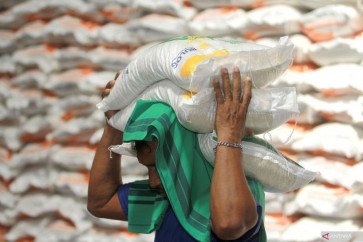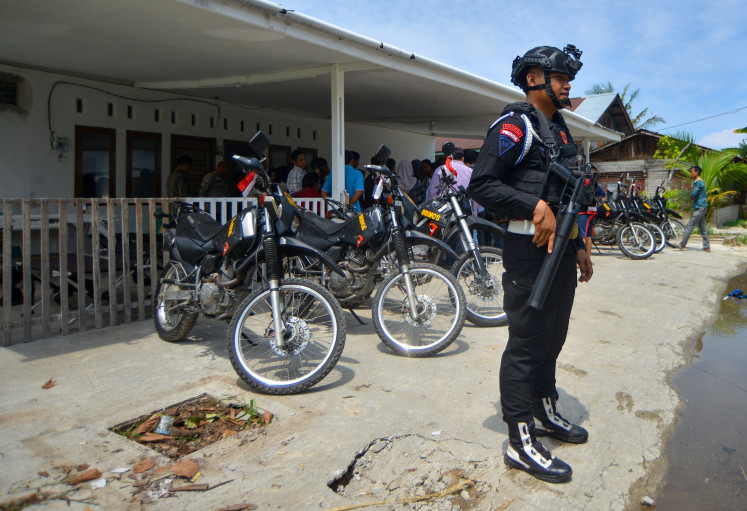Popular Reads
Top Results
Can't find what you're looking for?
View all search resultsPopular Reads
Top Results
Can't find what you're looking for?
View all search resultsKelimutu lakes experience `quick' change of color
The Kelimutu crater lakes in Ende regency, East Nusa Tenggara, have changed color once again
Change text size
Gift Premium Articles
to Anyone
T
he Kelimutu crater lakes in Ende regency, East Nusa Tenggara, have changed color once again.
The water in the three lakes has turned light green from its previous darker shade over the past week, Kelimutu National Park Center head Gatot Sorbaintoro said Thursday.
"The last color change here was in December last year," he said.
He added the cycle normally took decades or longer to roll out, but this time took only eight months.
"We haven't been able to check whether the color change this time is going to last long, because Mount Kelimutu is an active volcano," Gatot said. He added the Indonesian Institute of Sciences' (LIPI) Geotechnology Research Center had conducted studies here in 2007, one of which concluded that a change in the water color to dark gray meant an eruption was imminent.
"The color of the water in the Kelimutu lakes hasn't turned gray yet, and remains light green," Gatot said.
In December 2008, the color of water in two of the three lakes changed. The water in Lake Tiwu Ata Polo, or lake of the evil spirits, turned from black to dark green, while at Lake Tiwu Nua Muri Koo Fai, or lake of the young spirits, turned greenish blue.
The water in Lake Tiwu Ata Mbupu, or lake of the old people, located 200 meters from others, stayed black.
"All of them have turned light green now," Gatot said.
He added the changes were preceded by the appearance of a suspended solution spreading across the surfaces of all three lakes.
Studies by the Bandung Geological Center show Lake Tiwu Ata Polo contains high concentrations of iron, while Lake Tiwu Nua Muri Koo Fai contains pressurized gas.
"We found no indications they were about to change color," Gatot said. The soil structure around each lake is very, he went on, often causing minor landslides.
"But those aren't the reason for the changing color," he said.
Residents of Ende-Lio believe the color change is a natural warning about the possibility of a disaster.
"I urge residents not to be worried and associate it with anything supernatural," Gatot stressed.
The lakes, 60 kilometers east of Ende, Flores, fall within the jurisdiction of Koanara village in Wolowaru district. They are situated at an elevation of 1,690 meters above sea level, in a more temperate climate than neighboring lowlands.
Before 2006, the water in the lakes was tinged red, white and blue, but have since changed. The phenomenon was first publicized in 1905 by Dutchman Van Such Telen.
However, they were only known widely after author Y. Bouman described them in a chronicle in 1929. The Indonesian government designated the Kelimutu area, spanning a total 1,051,000 square meters, a national nature conservation area on Feb. 26, 1992.
Experts estimate the water volume in the three lakes totals 1,292 million cubic meters. Each is surrounded by steep walls sloping down 70 degrees and ranging in height from 50 to 150 meters.










